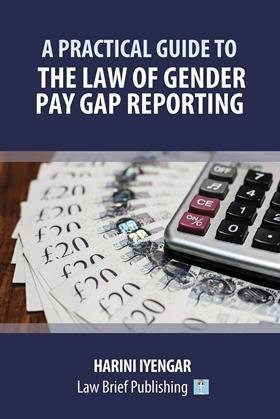A Practical Guide to the Law of Gender Pay Gap Reporting
Harini Iyengar
£49.99, Law Brief Publishing
★★★★✩
As the foreword by the Right Honourable Dame Elizabeth Gloster rightly suggests, this is an eminently readable book. It is never easy to make a technical book a joy to read, but Iyengar comes close.

This book does exactly what it says on the cover. It is a practical guide to the law in the area of reporting pay gaps based on gender, with emphasis on clear examples of best practice
But it is more than just dry law. Iyengar shares her passionate opinions on the inadequacy of equal pay law and concludes that the Gender Pay Regulations 2017 and other applicable laws are unlikely to solve the problem.
Women have had the right to equal pay on paper since 1970, but the gender pay gap persists and is widespread.
Having guided the reader step-by-step through the regulations in plain English and citing examples, Iyengar concludes that change must come not from the law but from employers and workers ironing out inefficiencies in the labour market.
The author is also critical of the lack of effective enforcement mechanisms in the regulations.
In addition, the book deals more broadly with the key legislation around gender pay and its complex mechanisms. More examples from case law would have been welcome.
This is a highly technical area in which expert advice is always going to be required. But I particularly appreciated and enjoyed the chapters on the cultural and moral origins of equal pay for equal work and the penultimate chapter ‘Beyond Compliance to Best Practice’.
This is a highly recommended read.
Karen Jackson is director at didlaw





























No comments yet